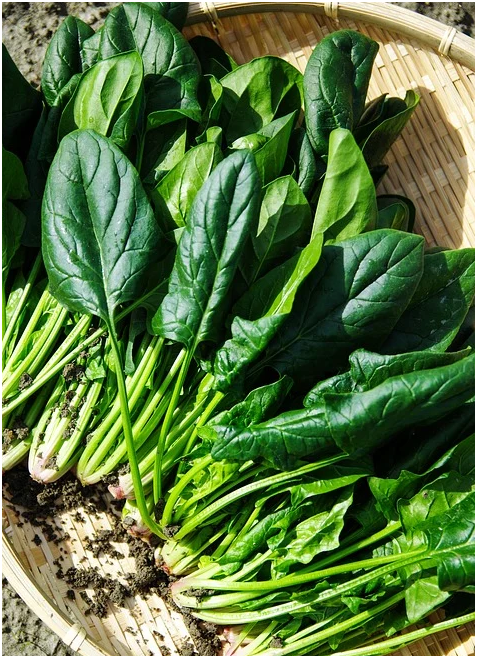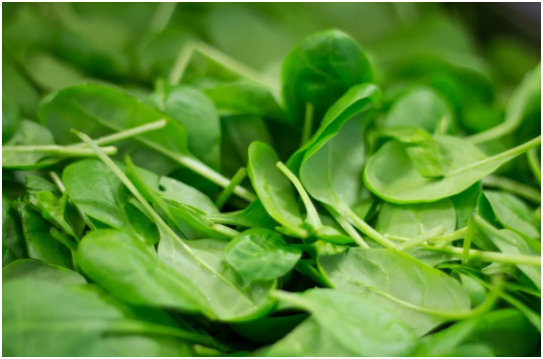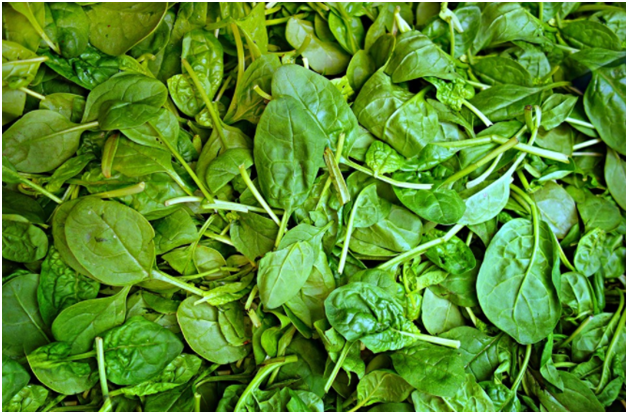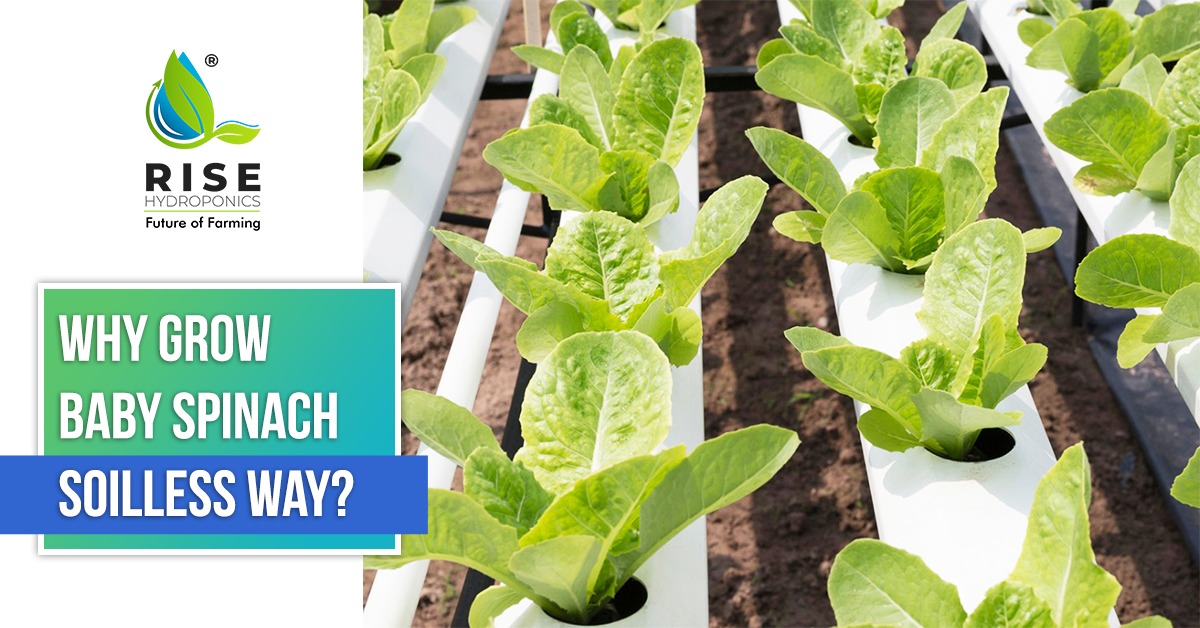Most of us grew up watching Popeye, the sailor man. Do you remember how he said: “I am strong to the finish because I eat my spinach”? Well, none of us will ever forget Popeye’s tales where emptied huge spinach tins and made massive biceps. We laughed our heart out at how he saved his love by just eating spinach and fighting it out with the enemies. This character from the cartoon helped mothers all across the globe to make their children eat spinach. After all, this leafy green is the source of an instance of superpower.
We may have poured out too much nostalgia, but a few facts about spinach do stand true. That is, it possesses many beauty and health benefits. It enhances blood quality, increases vitality, restores energy, and is an excellent vitamin C, B2, A, K, and iron source. With these numerous qualities, it is hard for us not to grow them in our homes.
Super fresh, highly nutritious and tasty spinach plucked straight from your garden can be the most rewarding and healthiest aspect of indoor farming in India. You can grow many plants using hydroponic farming at home, but leafy greens tend to be our favorite. One crop that grows incredibly well with hydroponics has to be spinach. This healthy and delicious plant grows beautifully year-round in a hydroponics greenhouse. Here is why spinach must be grown hydroponically.
Conserves water
The most practical advantage of using hydroponics to grow spinach is water conservation. When you compare traditional methods of cultivation with aeroponic farming, you will realize how gallons of water are saved. Conventional soil gardening causes a lot of water to be lost to the atmosphere. That is because soil gardening exposes the growing media. After all, an exposed plant demands loads of water when heated.
In hydroponics, you apply water directly to the root zone, a place where it’s most required.
Faster growth and good crop health

If you follow the basic principles of hydroponics with the appropriate type of system, you will not have to struggle hard. Without working too hard, you can get the kind of growth you desire, besides problems like mineral imbalances and drought will not affect the yield.
The chances of diseases and insects attacking the plants will diminish because hydroponic farming at home happens in a controlled aseptic system. So, you can rest assured about toxic pesticides and fungicides spoiling your crop.
With this profitable farming system in India, the spinach you grow will be healthier and grow faster.
Consistency
With soilless farming in India, you have to apply a specially-formulated solution of nutrients to the water. Apply that solution in small amounts. You will face no difficulty to search for minerals that the hungry plants may need, as is the case with soil gardening.
Water and climate have an enormous impact in soil gardening as these factors decide the number of essential nutrients they can draw for optimum growth. However, hydroponic spinach delivers consistent yields and quality as opposed to soil-grown spinach.
In a climate-controlled hydroponics setup, you can high yield repeatedly, irrespective of climatic conditions and geographic location.
Gardening ease

You will operate and program a hydroponics system as per your comfort if you lack an extended backyard. A hydroponic system can be placed easily without affecting the yield.
Forget water monitoring, digging and weeding, and other time-wasting tasks that follow when you engage in soil gardening. Also, when you keep the crops off and up the soil, you are saved from the chances of predators and other insects spoiling your crop.
Growing spinach using hydroponics makes it a profitable initiative. This method helps you save labour and frees you from frequent cropping times and season dependency on a commercial level. You have the potential of gaining a higher margin at a profit.
Optimum conditions for growing spinach hydroponically.
Before you go ahead and plant your spinach seeds, there are some things you must know, as is the case with most plants. The first thing is that Pythium contamination is a common thing in some hydroponics systems that affects spinach. This form of contamination causes the roots to rot and destroys the entire crop before the spinach matures.
You cannot keep this common contaminant out of a greenhouse. Instead, focus on routinely cleaning the surface that may come in touch with your nutrient solution and plants. Do not use sources of surface water for spinach crops and ensure proper aeration.
Temperature
Spinach grows best in areas where the temperature ranges between 45-65 degrees. It is a cool climate crop.
If the hydroponic spinach gets a temperature above 70 degrees, the leaves will start bolting. That means the crop will become bitter as it goes into the flowering phase.
Spacing
Keep a spacing of 4-5 inches when growing your hydroponics spinach. Spinach does not require a deep growing bed as it has a shallow root system. Do not allow your spinach to grow full size. That is because if they do, they will demand more space.
Light

Spinach does not need intense light besides light in long-duration to grow. Hydroponic spinach can grow with just 10-14 hours of light each day. There are several lighting choices when it comes to growing your hydroponic spinach since it desires minimal lighting requirements. Fluorescent lighting is one of the best choices as it consumes low power, produces less heat and requires you to make minimal investments.
pH
Maintain a pH level of 5.5-6 with your hydroponic spinach.
Nutrients
With spinach, you have to maintain an n-pK ratio. This ratio denotes high nitrogen content and will be directed towards the growth of your crop. Use the same regimen of nutrients up until the time it harvests because we eat the spinach when it reaches the vegetative cycle.
Pro tip: Use nutrients higher in phosphorus and nitrogen when growing spinach.
Conclusion
In 30-45 days, you will have your stock of spinach ready in your hands. We recommend harvesting the hydroponic spinach before it fully matures. That is because the leaves will taste much better and will be tender. Grow this leafy vegetable as it is effortless to cultivate. You can harvest it before the summer crops dominate your farm in the hot season. We hope you liked our blog. And, if there’s anything you would like us to know, please let us know below.

